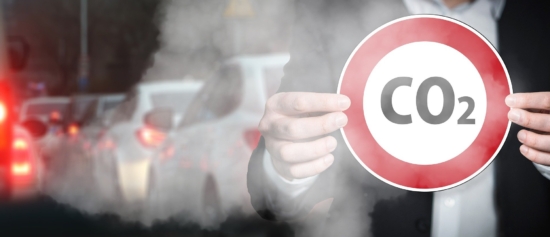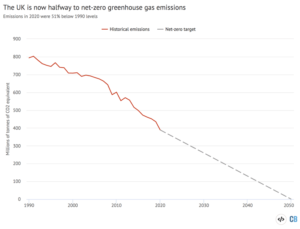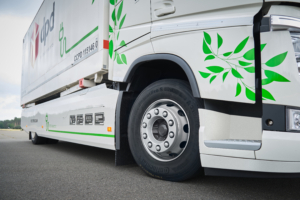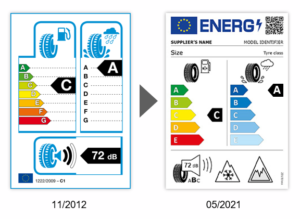BTMA: UN red alert on climate change is a call to action

Recent years have seen tyre industry interest and investment in sustainability sharply increase. In August the Intergovernmental Panel on Climate Change (IPCC) published an uncompromising report warning that “Scientists are observing changes in the Earth’s climate in every region and across the whole climate system” and adding that “some…are irreversible over hundreds to thousands of years.” Here, British Tyre Manufacturers Association chief executive, Graham Willson explains why the UN red alert on climate change is a call to action and what it means for the UK tyre industry:
The recently-published report from the UN climate scientists sends out a clear call to action. Experts have described the alternative as ‘Hell on earth’ with increasingly extreme weather as seen recently in North America, Turkey, Germany and Belgium.
The scale of the challenge is daunting: the near-total transformation of energy supply and use across the entire world. As individuals, we can feel powerless to bring about the necessary change. And yet, consider the impact of David Attenborough and the Blue Planet series. The last five years have seen a dramatic transformation of attitude toward the environment by the public and governments alike.
Faced with another Blue Planet moment, what are we to do as the UK tyre industry? In 2019 our sector, road transport, accounted for 30 per cent of total UK CO2 emissions. We cannot stand by and look to others to make the necessary progress without our participation.
As host of the COP26 international conference on climate change, the UK government has committed to reduce CO2 emissions by 68 per cent by 2030, and by 78 per cent by 2035. The 2030 target alone represents a 50 per cent acceleration of the previous decarbonisation plan. However, against these ambitious targets DfT forecasts traffic will increase by a further 21 per cent for cars and 35 per cent for vans by 2035 from 2018 levels. Cars and vans account for 78 per cent of UK road transport CO2 emissions.
The UK government has committed to ban the sale of new non-zero tailpipe emission cars and vans by 2035. However, these measures will be slow to impact the whole fleet. The Society of Motor Manufacturers and Traders (SMMT)’s ‘central scenario’ for the adoption of electric vehicles, combined with Department for Transport (DfT) traffic growth forecasts (see chart), suggests that road transport CO2 emissions in 2035 will still be almost two-thirds of their 2019 level.
How emissions evolve on the way to net zero in 2050 matters: the aggregate of all future emissions contribute to climate change, not just the rate of emissions in 2050. We can’t count on electrification alone to achieve the 2030 and 2035 reduction targets. We need to reduce emissions across the fleet now to lessen further damage to the climate.
Reduced tyre rolling resistance can make a valuable contribution to CO2 reduction much sooner than regulating new vehicle sales, due to tyres’ shorter replacement cycle. Tyre rolling resistance commonly accounts for over 25 per cent of a car’s CO2 emissions.
Pressure on vehicle manufacturers to reduce CO2 emissions has resulted in the near-universal adoption of low rolling resistance tyres on new vehicles. However, tyre replacement is commonly a distress purchase where initial price frequently overrides any consumer consideration of whole-life cost or environmental impact.
As noted earlier, consumers are increasingly concerned to reduce the environmental impact of their lifestyle. Will the extensive media coverage of recent extreme climate events and the UN IPCC report lead to changed attitudes towards tyre replacement? Recent research by Apollo reported that 69 per cent of UK car owners said that being better aware of the efficiency and noise ratings would influence their choice of replacement tyres in future (65% among women, 73% among men). This positivity towards independent ratings is highest among car owners aged between 18 and 24, among whom it reaches 79 per cent.
Government ‘concerned to see an improvement’ in tyre labelling communication
The role of OE-matched replacement tyres: Over 20 million tonnes of UK CO2 emissions could be saved by 2035 by fitting replacement tyres with rolling resistance matching the vehicle’s original equipment, according to BTMA.
The government is also on the case. In a recent letter to the industry, DfT wrote: “Consumer information has an important part to play in the Department’s plans for decarbonisation of road transport. This includes the availability of information relating to the safety and environmental performance of replacement tyres. A market surveillance exercise conducted by the DVSA last year revealed widespread deficiency in the communication of tyre labelling information. We are concerned to see an improvement in this area.”
Specifically, the DVSA mystery shopper campaign found that 78 per cent of retailers visited were not communicating the labelling information. Other sectors have found providing product performance information to be effective in changing consumer behaviour: sales of washing machines with the highest energy efficiency rating have grown over the last decade from 2 per cent to 68 per cent of all purchases.
New tyre labelling roll-out The new tyre labelling regulation has encountered unforeseen legislative hurdles in GB which remain unresolved. This has not prevented roll-out of the new label which is underpinned by an improved test method and accompanied by a pan-European product database. Ministers at DfT have indicated their intention to maintain alignment between the EU and GB labelling schemes.
In dialogue with DfT it is clear, under the present circumstances, their primary goal is communication with the consumer about tyre performance, not legalistic compliance with one labelling regulation or another. We understand that further mystery shopper activity is planned for this year.
Tyre retailers, through their particular combination of expertise and relationship with the motorist, are in a unique position to make a meaningful contribution to reducing climate change.
Introducing the tyre labelling information into customer dialogue offers the opportunity to better understand the consumer’s priorities and make a better sale. Better for the motorist, better for the retailer and better for the planet.







Comments